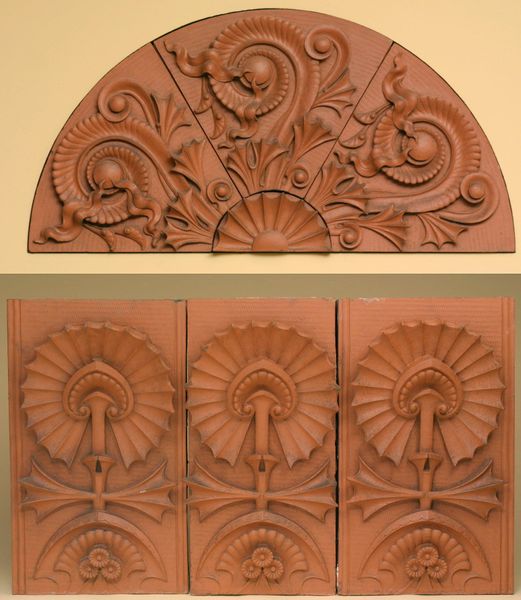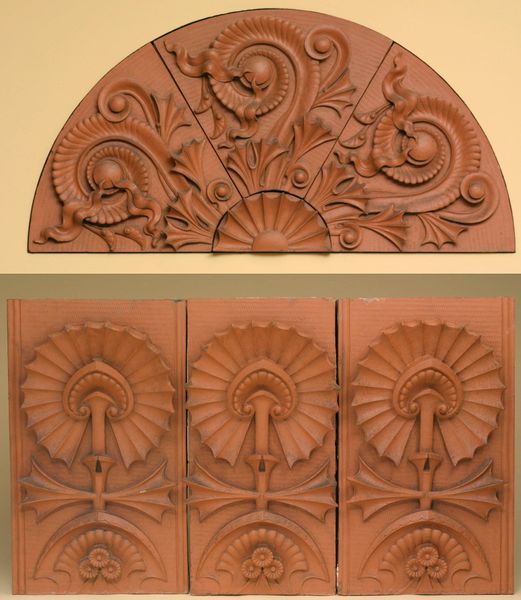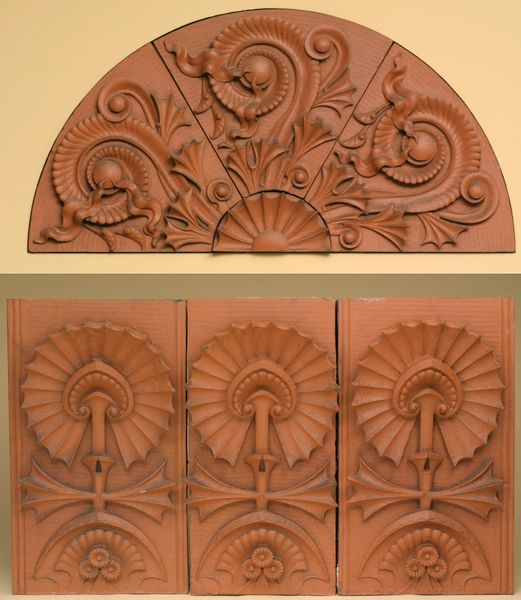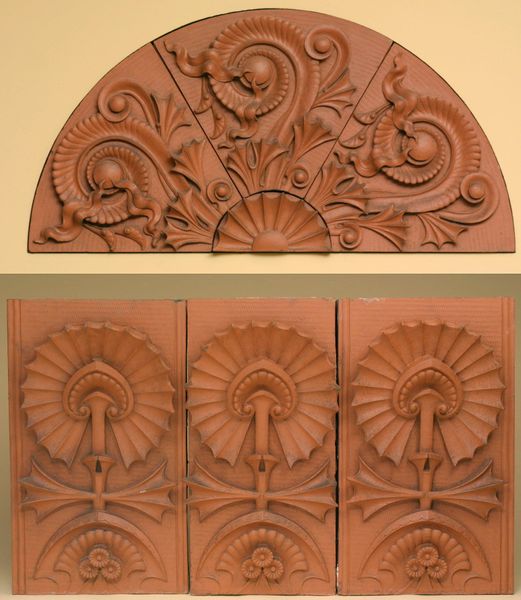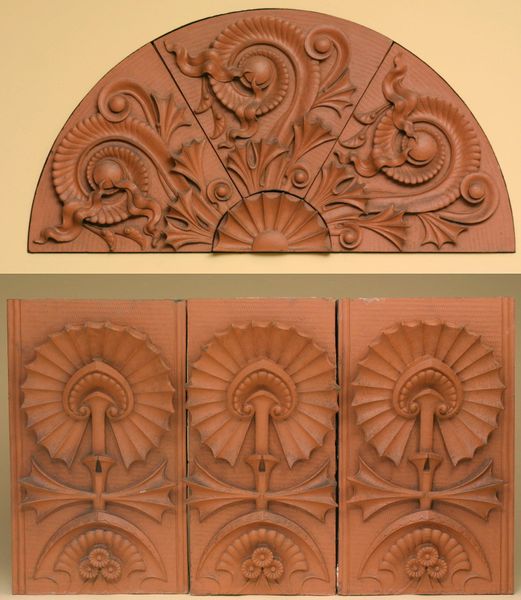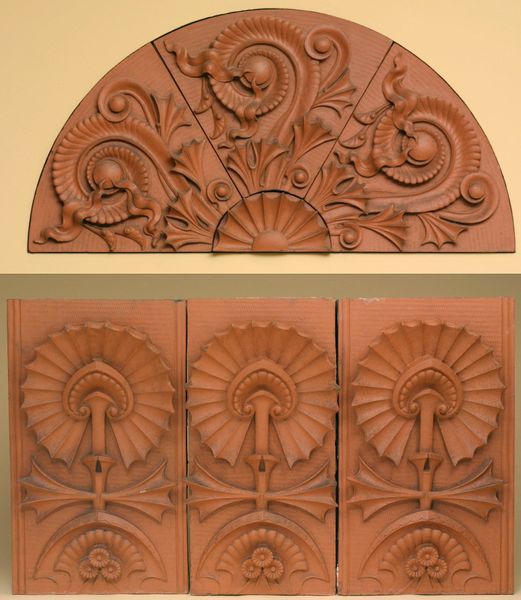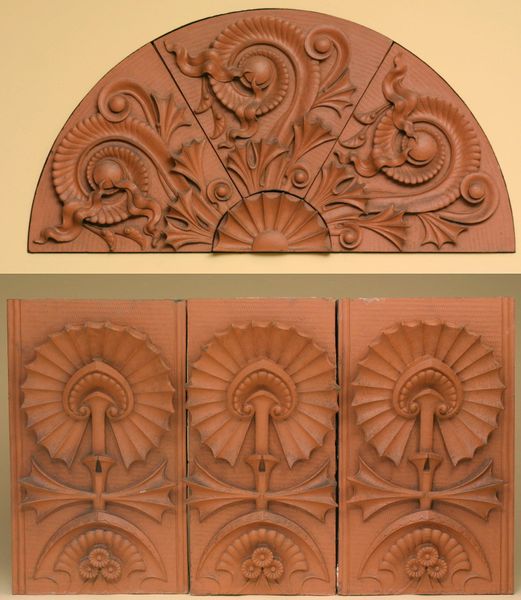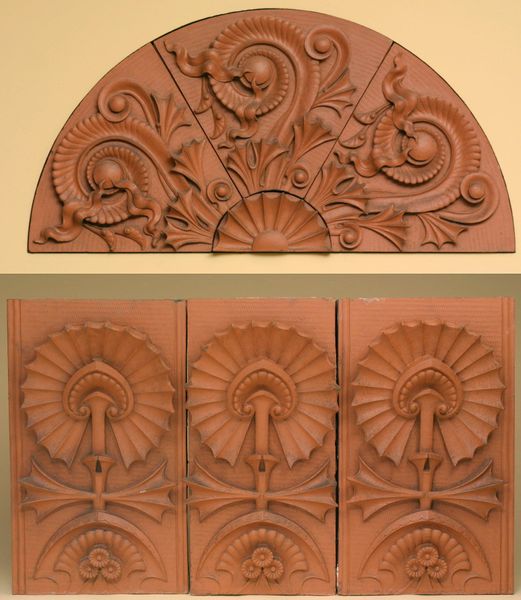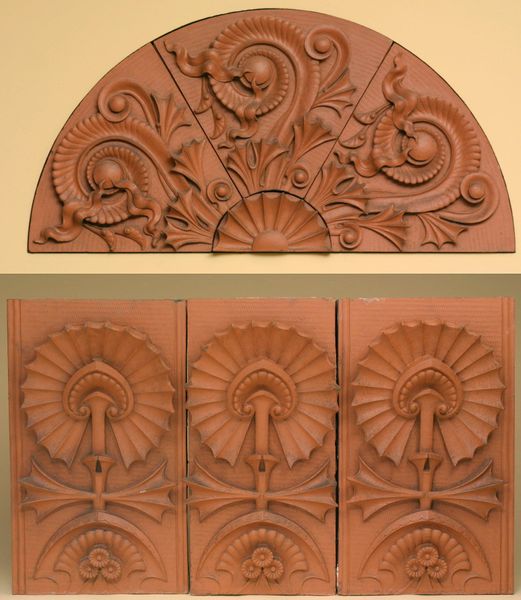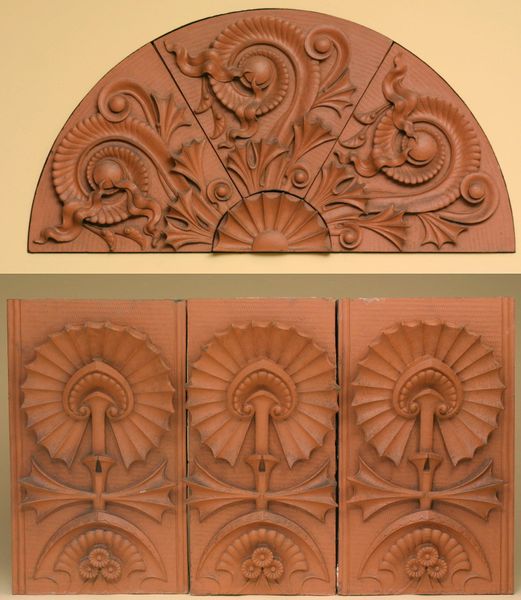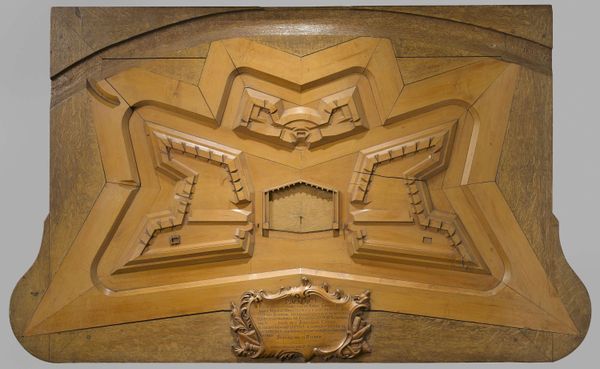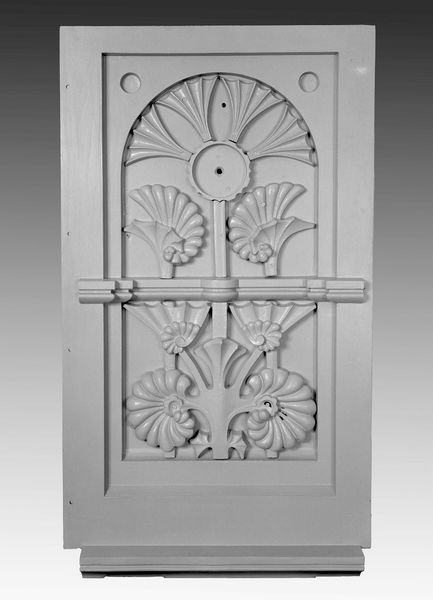
carving, relief, terracotta, architecture
#
art-nouveau
#
carving
#
relief
#
11_renaissance
#
terracotta
#
decorative-art
#
architecture
Copyright: Public Domain
Here we see a lunette and decorative panel, made of terracotta by Louis Henri Sullivan. Sullivan was a prominent architect who believed ornament should express the function and spirit of a building. His designs broke from European traditions, embracing an American identity through organic, nature-inspired forms. Sullivan saw architecture as a democratic art, accessible and uplifting for all, regardless of class. These panels offer a glimpse into the cultural optimism of the late 19th century, a time of industrial expansion and a growing middle class. The stylized, symmetrical designs evoke both the machine age and the natural world. The lunette, with its radiating sunburst and swirling foliage, suggests growth and progress. The panels below echo this sentiment with their stylized plant motifs. Sullivan's ornamentation sought to elevate the everyday, transforming buildings into spaces that inspired and celebrated the human experience. In his own words, he sought to create "a new, vital, and distinctly American form of architectural art."
Comments
minneapolisinstituteofart almost 2 years ago
⋮
Louis Sullivan designed these terracotta panels for the exterior of the Scoville Building in Chicago, one of the Adler and Sullivan firm's earliest commissions. It required them to remodel an existing Adler structure to accord with a new, much larger addition. The terracotta pieces shown here formed part of the organic decoration of stylized plants with which Sullivan tied the two buildings together. This lunette ornamented the arch above the windows of the top (fifth) story. It has an undulating design of ferns unfurling and would have complemented other organically-inspired terracotta pieces throughout the exterior.
Join the conversation
Join millions of artists and users on Artera today and experience the ultimate creative platform.


